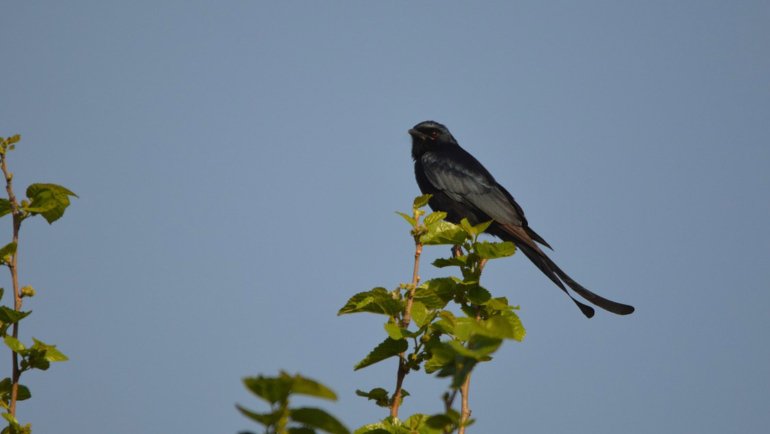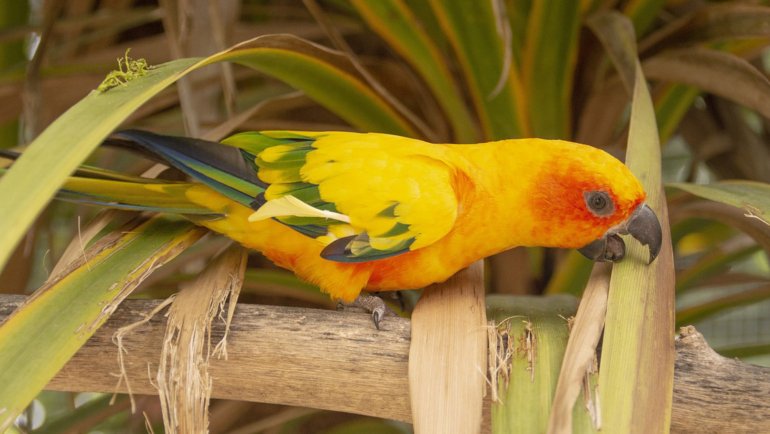Cranes are among the most elegant and majestic birds in the world, celebrated in cultures across the globe for their beauty and significance.
This article serves as a comprehensive guide to these fascinating birds, offering insights into their taxonomy, physical characteristics, behavior, habitat, and conservation. Known for their impressive size and distinctive calls, cranes play a vital role in their ecosystems.
As symbols of luck, longevity, and fidelity, they hold a special place in human history and mythology. This fact sheet aims to provide an informative and engaging overview of cranes, unveiling the wonders of these avian marvels.
The Crane at a Glance
Classification
| Kingdom: | Animalia |
| Phylum: | Chordata |
| Class: | Aves (Birds) |
| Order: | Gruiformes |
| Family: | Gruidae |
| Genus: | Varies (e.g., Grus) |
| Species: | Varies (e.g., Grus grus) |
Essential Information
| Average Size: | 3.3 to 5.6 feet (1 to 1.7 meters) |
| Average Weight: | 6.6 to 26.5 lbs (3 to 12 kg) |
| Average Lifespan: | 20 to 30 years |
| Geographical Range: | Global, varies by species |
| Conservation Status: | Varies, from Least Concern to Critically Endangered (IUCN Red List) |
Species and Subspecies
Cranes consist of 15 species, grouped under the family Gruidae. These species exhibit diverse characteristics and are adapted to a variety of habitats. The most notable species include:
- Common Crane (Grus grus): Found across Europe and Asia, recognized by its grey plumage and red crown.
- Whooping Crane (Grus americana): The tallest North American bird, known for its striking white plumage and loud, whooping call.
- Sarus Crane (Antigone antigone): The tallest flying bird in the world, native to parts of the Indian Subcontinent, Southeast Asia, and Australia.
- Sandhill Crane (Antigone canadensis): Known for its large size and distinctive red forehead, this species has a broad range across North America and Siberia.
- Black-necked Crane (Grus nigricollis): Found in China and Bhutan, this species is unique for its black neck and head.
- Grey Crowned Crane (Balearica regulorum). This species is notable for its striking appearance and is one of the few crane species that dwell in Africa. The most striking feature is its crown of stiff golden feathers.
Each species has distinct plumage, calls, and behaviors. Subspecies variations often occur based on geographic location, leading to differences in size, plumage color, and migration patterns. These variations are critical for adaptation to different environments and for species identification.

Description
Cranes exhibit a range of physical characteristics that make them distinctive in the bird world.
Generally, cranes are large birds, with some species like the Sarus Crane reaching heights of up to 5.9 feet (1.8 meters). Their plumage varies from species to species, ranging from the pure white of the Whooping Crane to the complex patterns of the Grey Crowned Crane.
Most species have long necks and legs, which aid in foraging in wetlands. Many have a patch of bare skin on the face, which can change color or even expand during display behaviors.
Cranes have a unique anatomy adapted for a life spent mostly on the ground. Their long legs are well-suited for walking and wading, while their long, pointed beaks are perfect for probing in mud for food.
Generally, there is little difference in size or plumage between males and females, although in some species, males may be slightly larger.
Habitat and Distribution
Cranes are found across all continents except South America and Antarctica, demonstrating their adaptability to various habitats. Different species occupy a range of environments, from the Arctic tundra (Siberian Crane) to African savannas (Grey Crowned Crane).
Most crane species prefer wetlands, marshes, and grasslands, which provide both food and a safe environment for nesting. However, some, like the Sandhill Crane, can also be found in arid regions.

Behavior
Cranes are known for their complex and diverse behaviors, which vary widely among species. These birds are primarily diurnal. Their activities include foraging, preening, and engaging in social behaviors.
Many crane species are social birds, especially outside the breeding season, when they can form large flocks. However, they are generally monogamous and territorial during the breeding season.
Cranes are famous for their loud and resonant calls, which can be heard over long distances. These calls are crucial for maintaining pair bonds and territorial defense. Additionally, cranes are known for their spectacular dancing behaviors, which include leaps, bows, and wing flapping, and play a role in courtship and aggression.
Some species, like the Whooping and Sandhill Cranes, undertake long migratory journeys, traveling thousands of miles between breeding and wintering grounds.
This diverse range of behaviors and adaptations illustrates the complexity of crane species and their ability to thrive in various environments around the world.
Diet and Feeding Behavior
Cranes have varied diets and feeding behaviors, adapted to their specific habitats. Most crane species are omnivorous. Their diet includes a mix of plant material like seeds and berries, and animal prey such as insects, small mammals, and amphibians.
Cranes typically forage while walking, using their long bills to probe into soil or water for food. Some species, like the Grey Crowned Crane, may also peck at insects and animals on the surface. Their foraging behavior is often closely tied to the seasonal availability of different food sources.
Predators
Cranes face predation threats, especially during the more vulnerable stages of their life cycle.
- Eggs and Chicks: The most significant risk is to eggs and young chicks, which can fall prey to a variety of predators such as foxes, raccoons, wild cats, and even larger birds of prey.
- Adult Cranes: Adult cranes are less vulnerable due to their size, but they can still be threatened by larger predators, especially in regions where they coexist with large carnivores.

Reproduction and Life Cycle
The reproductive behavior of cranes is characterized by long-term pair bonds and elaborate mating rituals.
Cranes are generally monogamous, often forming lifelong pair bonds. The courtship process involves intricate dances, which include a series of jumps, bows, and calls.
Cranes do not have a gestation period as they are egg-laying birds. The incubation period for eggs varies among species but typically ranges from 25 to 30 days.
Cranes usually lay one to three eggs per breeding season. Both parents take part in incubating the eggs and raising the young. The chicks are precocial, meaning they are relatively mature and mobile from the moment of hatching. Parental care is crucial as the chicks learn to forage and avoid predators.
Cranes’ reproductive strategies, involving long-term bonds and cooperative parenting, play a vital role in their survival, especially considering their generally low reproductive rates.
Conservation and Threats
The conservation status of cranes varies among species, but many face significant challenges. While some species like the Sandhill Crane are abundant, others like the Whooping and Siberian Cranes are critically endangered. Habitat loss, climate change, and human disturbance are the primary threats.
Key threats include wetland drainage, agricultural expansion, and illegal hunting. Climate change also poses a long-term risk, altering the habitats cranes rely on.
Various international and local organizations work towards crane conservation. Efforts include habitat protection, breeding programs, and environmental education. The International Crane Foundation is a notable organization dedicated to crane conservation worldwide.
Fun Facts
- Symbolism: In many cultures, cranes symbolize longevity and fidelity, as they often live long lives and typically mate for life. Japan’s national bird is a crane.
- Vocalization: Cranes have a complex larynx, which allows them to produce a wide range of vocalizations. Some crane calls can be heard from miles away.
- Dancing: Crane dances are not only for courtship; they’re also a way to relieve stress and strengthen pair bonds.
- Migration: Some crane species undertake some of the longest migratory journeys of any bird. The Siberian Crane, for instance, migrates up to 10,000 miles annually.
- Parenting: Crane parents are highly attentive. They teach their young essential survival skills, including how to find food and migrate.
Frequently Asked Questions
How long do cranes live?
Cranes can live for 20 to 30 years in the wild, and some individuals in captivity have lived for over 60 years.
Can cranes fly long distances?
Yes, many crane species are excellent long-distance flyers, with some migrating thousands of miles each year.
Are all cranes endangered?
Not all. While some species like the Whooping Crane are critically endangered, others like the Sandhill Crane have stable populations.
What do cranes eat?
Cranes are omnivorous, feeding on a variety of plant matter, insects, small mammals, and amphibians.
Why do cranes dance?
Cranes dance to strengthen pair bonds, express aggression, relieve stress, and as part of their courtship rituals.





